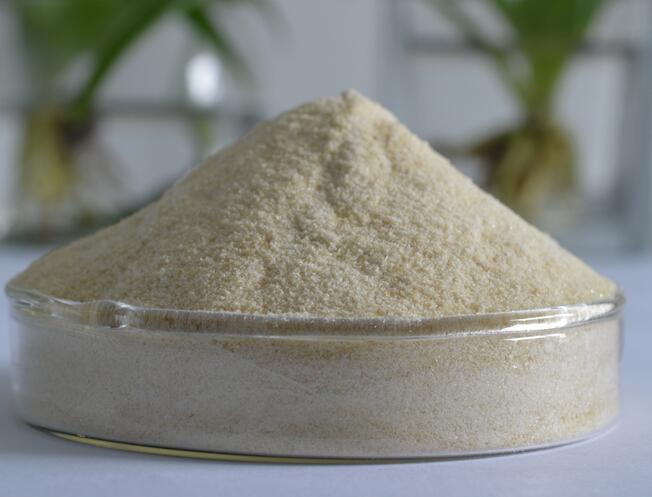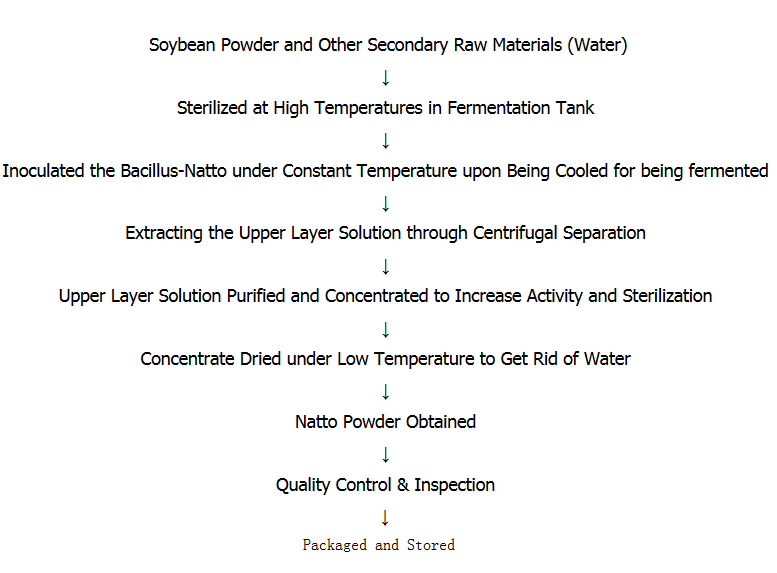Nattokianse source: Extracted from natto, a traditional Japanese food produced from the
fermentation of soybeans with Bacillus subtilis natto.

Nattokianse introduction:Nattokinase is a naturally-occurring proteolytic enzyme derived from natto, a traditional Japanese food produced from the fermentation of soybeans with Bacillus subtilis natto. Basically, it is an enzyme that digests fibrin both directly and indirectly. Indirectly, it activates pro-urokinase and tissue plasminogen activator (t-PA), supporting the fibrinolytic activity of plasmin. These combined actions promote healthy platelet function, circulation and blood flow.
Appearance:Yellow-white fine powder
Nattokianse specifications: 5000-20000Fu 100%Natural 98.0%pass 80mesh
Test by:HPLC
Processing technology:

CERTIFICATE OF ANALYSIS
|
ANALYSIS |
SPECIFICATION |
RESULTS |
|
Nattokinase |
≧20000FU/g |
26600FU/g |
|
Vitamin K2 |
<10ppm |
Complies |
|
Appearance |
Light Yellow Powder |
Complies |
|
Odor |
Deodorization |
Complies |
|
E.Coli |
<10 CFU/g |
Complies |
|
Total Yeast & Mold |
<100 CFU/g |
Complies |
|
Total Heavy Metals |
<10ppm |
Complies |
|
Arsenic |
<2ppm |
Complies |
|
Lead |
<2ppm |
Complies |
|
Loss on Drying |
<8% |
6.10% |
Advantage:
1.The content of K2 less than 10ppm.
2.Getting rid of Purine.
Dosage:
1. Recommended Dosage for Normal or Sub-health people to prevent cardiovascular and cerebrovascular disease is 2000FU/day;
2. Recommended Dosage for Cardiovascular and Cerebrovascular diseases patients is 2000FU-4000FU/day;
3. Recommended Dosage for seriously Cardiovascular and Cerebrovascular diseases patients is 4000FU-6000FU/day.
Main Benefits:
1.Nattokinase is used for cardiovascular diseases including heart
disease, high blood pressure, stroke, chest
pain (angina), deep vein thrombosis (DVT),“hardening of the
arteries”(atherosclerosis), hemorrhoids, varicose veins, poor
circulation, and peripheral artery disease (PAD).
2.It is also used for pain, fibromyalgia, chronic
fatigue syndrome, endometriosis, uterine fibroids, muscle
spasms, infertility, cancer, and a vitamin-deficiency disease called beriberi.
Company Pictures:


